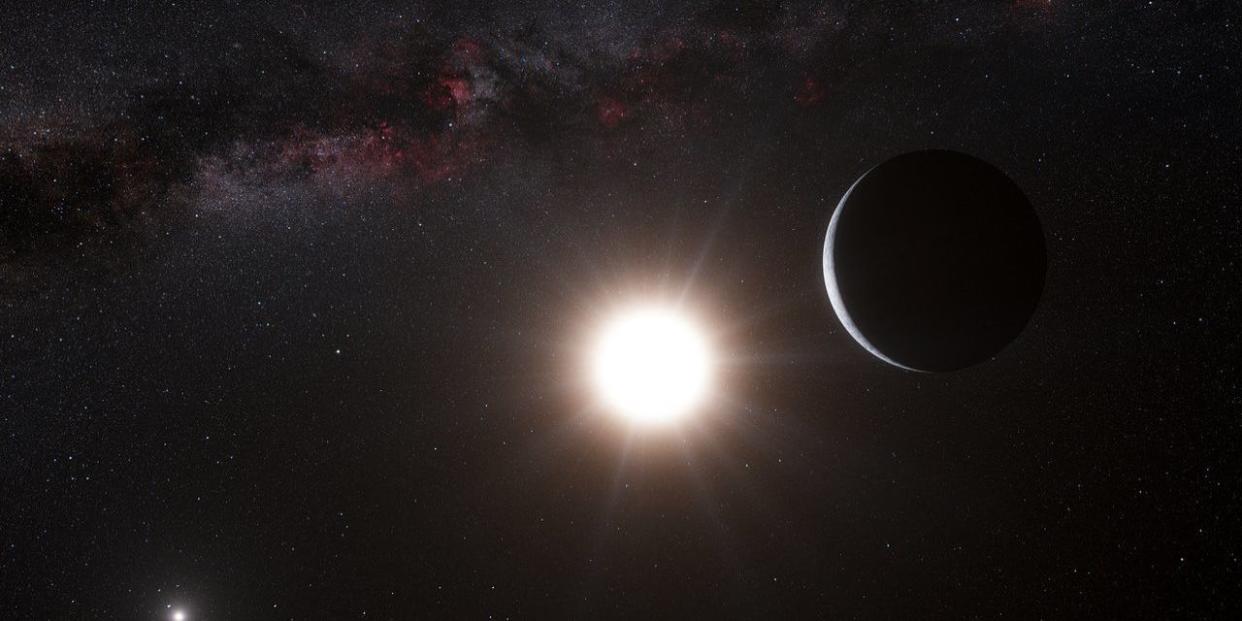Can Crowdfunding Find Earth 2.0?

Now that we've found a planet next door to our solar system, the hunt is on for a more promising one-an Earth-like world that could be lurking just a few light years away. A group called BoldlyGo has launched a crowdfunding effort called Project Blue aimed to build a telescope that could search for this world.
The Alpha Centauri system, located about four light years from here, has three stars in it. The primary stars, Alpha Centauri A and B, are around the size of the Sun and orbit each other. The more distant star, Proxima Centauri, is very small and faint, orbiting the other two stars at a vast distance.
The world stood up and took notice last year at the announcement that the latter star has a planet around it called Proxima-b. But the star's small size makes it less than ideal for life. Also, one hemisphere of the planet would face the star at all times, with the other in perpetual darkness. Proxima Centauri has violent flare activity, which could strip away planetary atmospheres.
That's why some scientists are keen to look for a potentially Earth-like planet in the Alpha Centauri system. The two main stars in Alpha Centauri are calmer than Proxima Centauri, and if there were a planet around one of them in the habitable zone, it would make a much more ideal candidate. So far, however, most searches of this system have come up dry. A tentative detection in 2012 was quickly refuted.
Project Blue is seeking $175,000 on IndieGoGo. The goal is to send an orbiting telescope to space carrying an object called a coronagraph-which blots out a star's light and makes it easier to find planets. Project Blue would be the first-ever intensive effort on the stars, focused only on the system hoping to capture a distant "blue dot" that would have just enough resolution to suggest whether or not there's water there. If a habitable planet is found, it will be the most promising candidate for life near us. Projects like Breakthrough Starshot could even get robotic probes there within a human lifetime.
The initial crowdfunding effort will go toward mission engineering and science instrument design, as well as software development. The group hopes to have a telescope with a 50-cm (around 20 inch) diameter aperture in space by 2021.
The overall effort will cost the group $50 million. As far as the $175,000 goal on IndieGoGo, the Project Blue press contact told us:
"We seek to raise a minimum of $175,00 from this IndieGoGo campaign to help carry out the CORE program of establishing detailed requirements for the mission, designing the initial system architecture, using computer simulations to test how robust the design is for detecting exoplanets, and engaging potential industry partners who could manufacture components of the mission."
Thus, the crowdfunding campaign won't allow the group to build a telescope. But it would allow them to put forth a real proposal for the millions it would take to realize the mission. Putting a telescope in space is a long way off, but the Project Blue advisor group is full of the kind of names that'd give one confidence that someday this project could become real.
You Might Also Like

